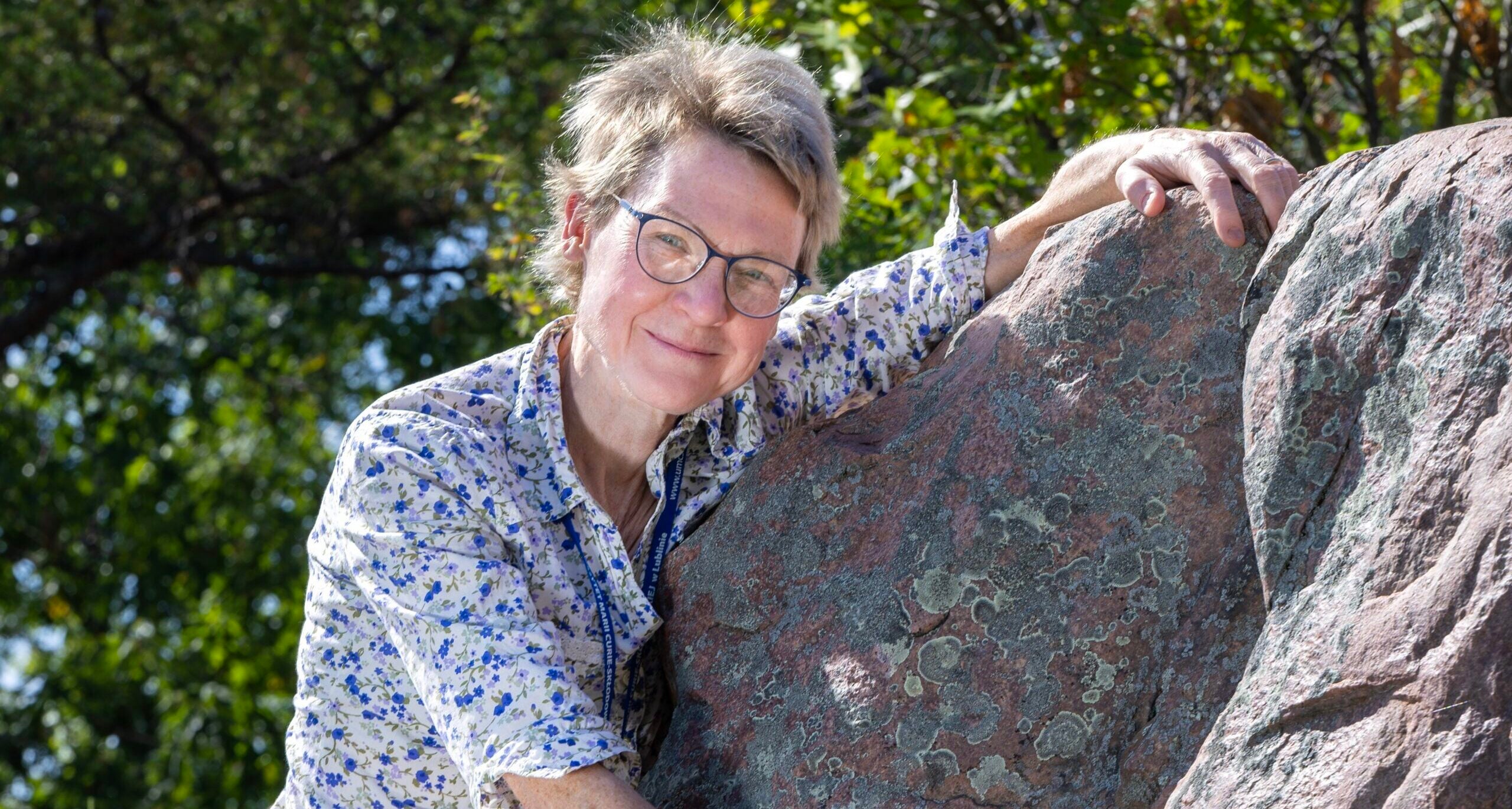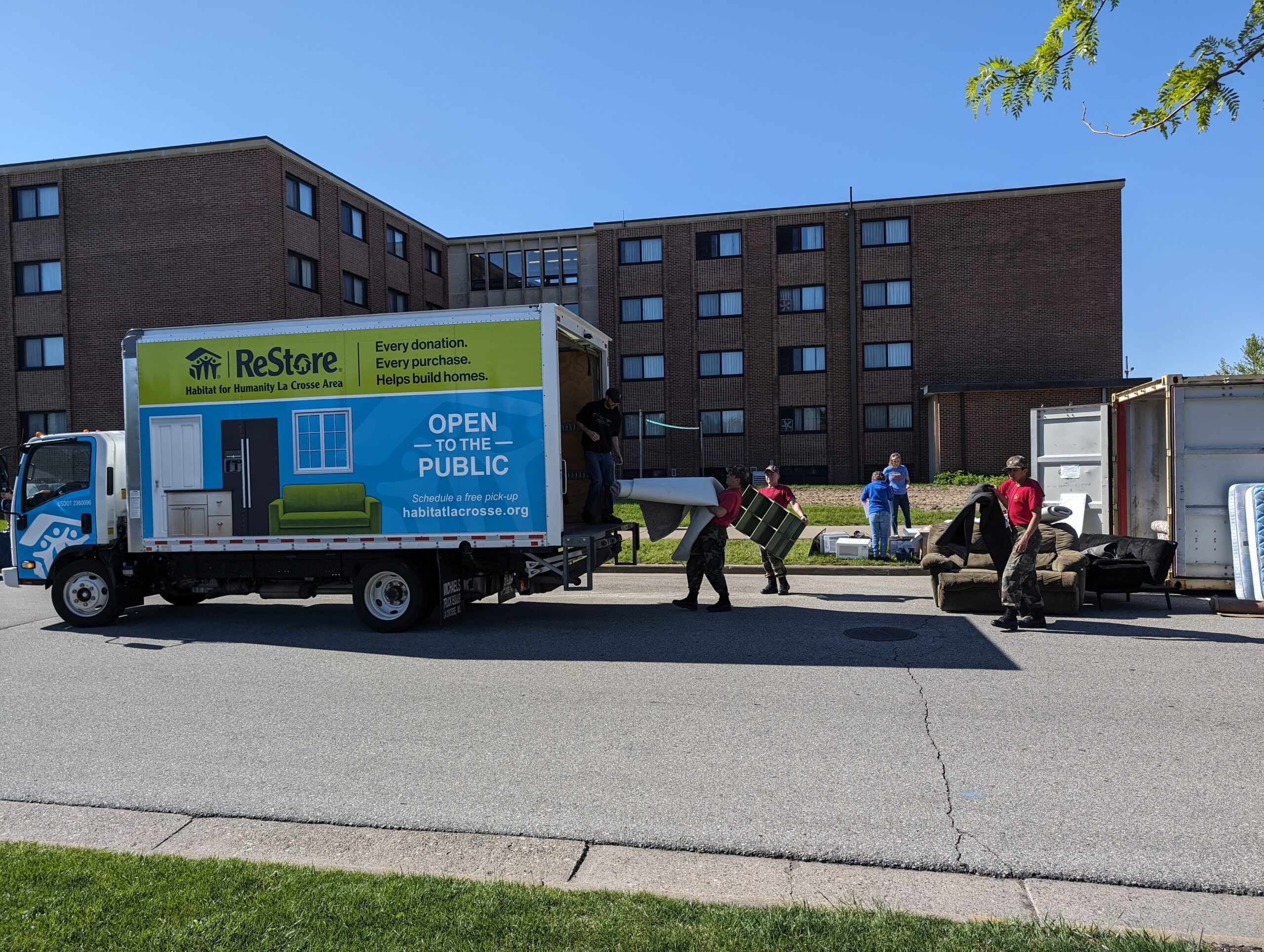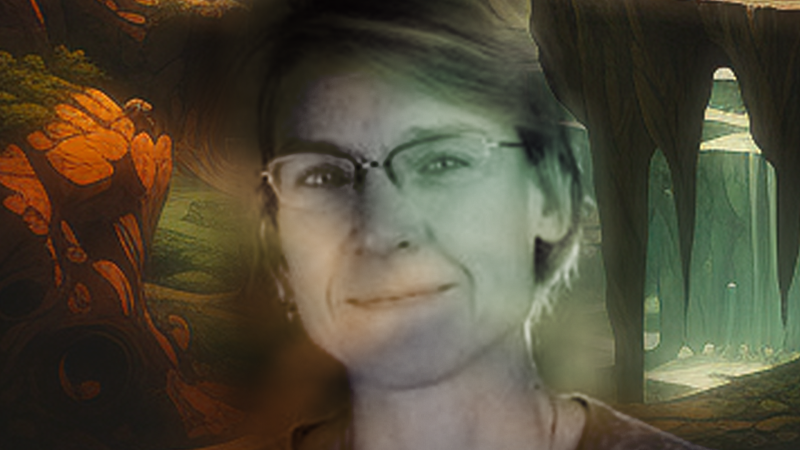Rocks are animate, sentient, creative … Really?
Rocks are all these and more — they speak, even — to structural geologist Marcia Bjornerud.
“They’re moving across the globe tectonically, they’re wrinkling and deforming as continents collide,” she recently told WPR’s “Wisconsin Today. “And so in a very literal sense, rocks are animate.”
Stay informed on the latest news
Sign up for WPR’s email newsletter.
The Lawrence University professor said our popular perception that rocks and landscapes are inert is a misconception. Having taught geology for more than three decades, Bjornerud is on a mission to inspire people to give more thought to their roles as “earthlings” within a rock-tastic ecosystem.
“The earth is noticing what is happening, what we’re doing to it,” she said. “Rocks that formed billions of years ago are drinking in yesterday’s rainwater. Everything is in communication in real time.”
Bjornerud talked with WPR about her new book, “Turning to Stone: Discovering the Subtle Wisdom of Rocks.”
The following interview was edited for brevity and clarity.
Kate Archer Kent: When you see rocks as having distinct personalities, does something inside you change?
Marcia Bjornerud: I think having a sense of familiarity, even kinship with entities in nature, not only living things, but the very rocky substrates below us, can give one a real sense of groundedness, of belonging to this very ancient, amazing Earth ecosystem.
And for me, there’s a real joy in being able to see a rock, recognize it by name, give it a greeting and read what it’s saying.
I often use metaphors of rocks as texts. When I see them in the wild, they’re fragments of some grander, larger manuscript.
KAK: Let’s travel to Lake Superior, “whose immensity,” you write, “flattens human hierarchies.” Why do you consider it to be your “center of gravity?”
MB: I mean that in a couple of different ways — it actually has such dense rocks. The basalts that erupted in this great rifting episode about a billion years ago are very dense. And so there’s actually a stronger pull of gravity by a tiny percent when you’re close to the lake and those dense rocks.
But for me, psychically and even spiritually, that lake, knowing it’s there, knowing it’s so old, knowing it has many mysteries we still don’t understand, is a source of great existential comfort and, I think, reminds us to be humble that nature is so firmly in charge — it becomes obvious when you’re on the shores of the lake.
KAK: In your Arctic field seasons — in Svalbard in the Arctic Ocean — you were tasked with trying to describe the story of mountains. What is fascinating about mountain building?
MB: The idea, again, that rocks can change shape, that they are shape shifters.
They are malleable. They’re flowing. That concept, I think, gripped me early on as a geology student, that we could see this record of mountains growing if we just learned how to read the clues that were preserved in mountains.
And in fact, Wisconsin is a very good place to do this. People may not realize that we have a fantastically geo-diverse state, and in the northern third or so of the state in particular, we have records of several distinct tectonic events, including at least two great mountain ranges, volcanoes and even quite large earthquakes in the past.
KAK: When you bring your students into the field, it brings out the best in you and in your students. Can you talk about those field expeditions and what they’re learning?
MB: Although Wisconsin doesn’t have a place like the Grand Canyon where we can see all of the rocks of all ages, if you go from north to south and east to west across the state, we have a wider range of rock types and ages of rocks than the Grand Canyon.
So this is a wonderful place to teach geology. Here in the eastern part of the state, in Appleton, we’re very close to the Niagara Escarpment. We’ve got glacial deposits. We don’t have to go too far to the north to be in much older Precambrian rocks.
So there are many chapters in Wisconsin’s history that are available to us if we just know where to look.
The last chapter of “Turning to Stone” is about the Baraboo Quartzite. In this passage, Bjornerud describes taking students to the Point of Rock outcrop.
“The Baraboo Quartzite still remembers the tides and currents that deposited it more than 1.5 billion years ago. After a few minutes in the company of the rock, my students begin to pick up its idiom. Two of them exclaim that they found an amazing bedding surface. It’s corrugated, ribbed. I let them imagine that they’re the first to discover it. It’s my favorite thing about this outcrop. The ancient ripple marks are perfectly shaped, undulating, almost sensual, sculpted by water that flowed a billion-and-a-half spring times ago. Michelangelo would have admired them. Soon, everyone has come to marvel at the ripple marks and like so many previous pilgrims to this spot, they can’t help but stroke them in reverence. It makes me inordinately happy to see digital 20-somethings fall under the spell of these ancient sediments.”
Wisconsin Public Radio, © Copyright 2024, Board of Regents of the University of Wisconsin System and Wisconsin Educational Communications Board.



